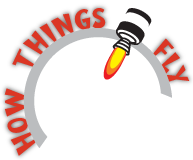Ask an Explainer
After the air is compressed and combustion occurs in a turbofan engine, how is the air accelerated out of the nozzle?
After combustion occurs in a turbofan engine, the hot exhaust inside of the core of the engine expands, and this gas expansion forces the exhaust out of the nozzle. In order to reduce the building pressure inside of the core of the turbofan engine caused by combustion, the exhaust must move out of the engine through the nozzle. As it moves out of the core, the exhaust is also passed over turbine blades, which drive the fan blades up front. A turbofan engine produces thrust in two ways: from the combustion that happens in the core of the engine, and from the rest of the incoming air that goes around the engine, which is driven by the fan blades that act just like a propeller. The exhaust coming out of the core of an engine moves faster than the air that goes around it, and this difference in speed is called the bypass ratio.

